A Rare Neoplastic Growth on the Ear Lobe
Authors:
R. K. Rovere 1; S. F. Hilgert 2; Da Costa Camara P. 3; De Lima A. S. 4
Authors‘ workplace:
Department of Medical Oncology, Santo Antonio Hospital, Blumenau, Santa Catarina, Brazil
1; Santo Antonio Hospital, Blumenau, Santa Catarina, Brazil
2; Department of Surgical Oncology, Santo Antonio Hospital, Blumenau, Santa Catarina, Brazil
3; Private Practice of Dermatology, Brusque, Santa Catarina, Brazil
4
Published in:
Klin Onkol 2014; 27(5): 367-368
Category:
Case Reports
doi:
https://doi.org/10.14735/amko2014367
Overview
We report a case of an 83 year old previously healthy female patient presenting with a swiftly evolving erythematous violaceous, infiltrative, ulcerated onion like mass with hyperkeratotic surface on the left ear lobe. The lesion was excised and resulted as an atypical fibroxanthoma, an extremely rare neoplastic growth, being a superficial variant of pleomorphic malignant fibrous histiocytoma. A brief review of diagnosis, treatment and prognosis is discussed.
Key words:
skin – clear cell atypical fibroxanthoma – immunohistochemistry – differential diagnosis – head and neck neoplasms – neoplasms – prognosis
Case report
An 83 year old previously healthy female patient, agriculturist, presents with a history of an erythematous violaceous infiltrative, ulcerated onion like mass with hyperkeratotic surface on the left ear lobe (Fig. 1– 4). As the patient had a long history of chronic sun exposure and lived in one of the highest melanoma rates areas in the world [1], it was initially thought to be a metastatic melanoma by the surgeon.
The lesion was then completelly excised and sent for pathological analysis, with the result coming as a malignant ulcerated fusocellular neoplasia with negative margins. Further, an immunohistochemical analysis was performed and was negative for all markers, including protein S 100, all the cytokeratins, Melan A/ MART 1, protein p53, CD 23and desmin, compatible with an atypical fibroxanthoma, a very rare form of skin cancer. The atypical fibroxanthoma is a superficial variant of pleomorphic malignant fibrous histiocytoma [2]. Our case has followed the classic presentation as a head and neck tumor in an elderly individual, and to the best of our knowledge just one case in medical literature has been reported in a different topography on the dorsum of the hand, described almost three decades ago [3].
In a retrospective analysis of Mohs surgery, only 0.2% of the malignant findings were fibroxantomas out of 42,279 patients [4].
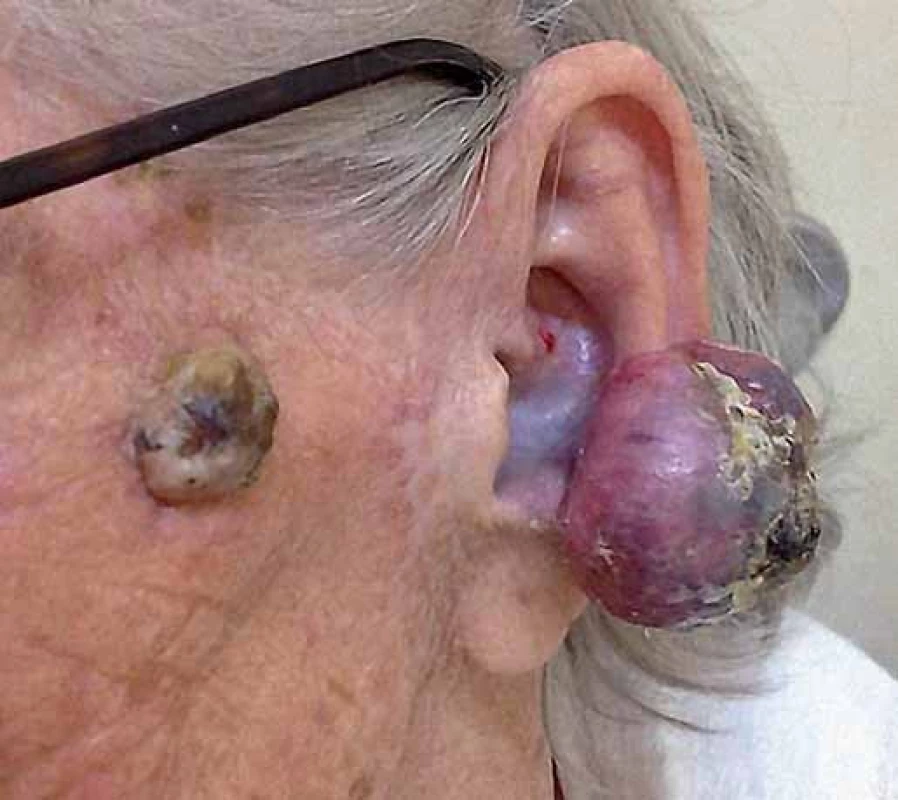
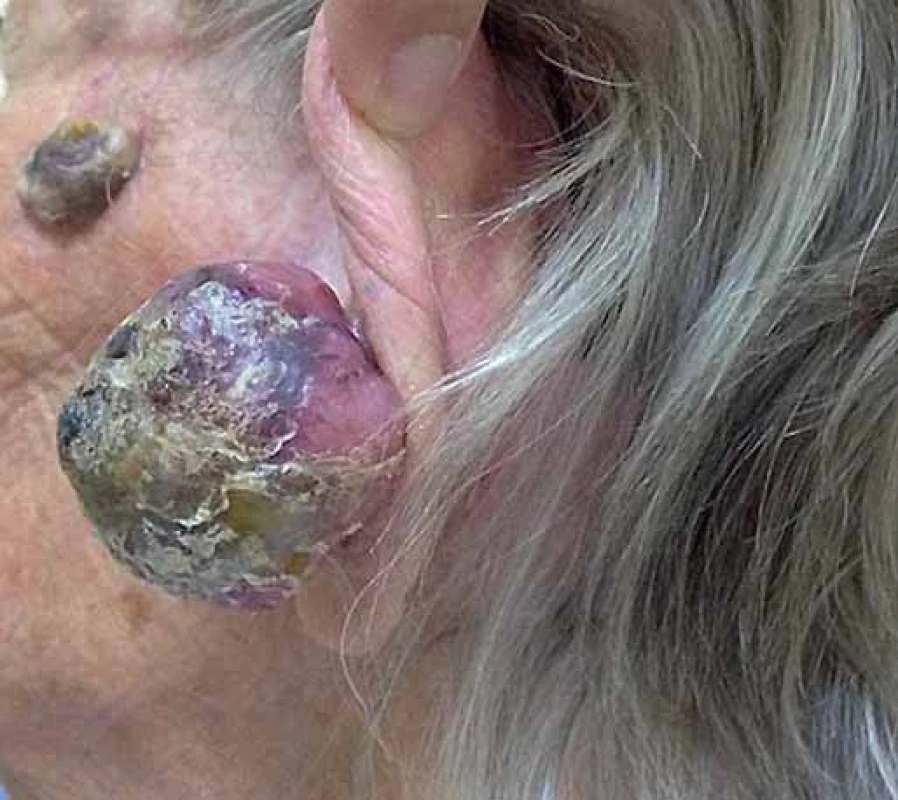
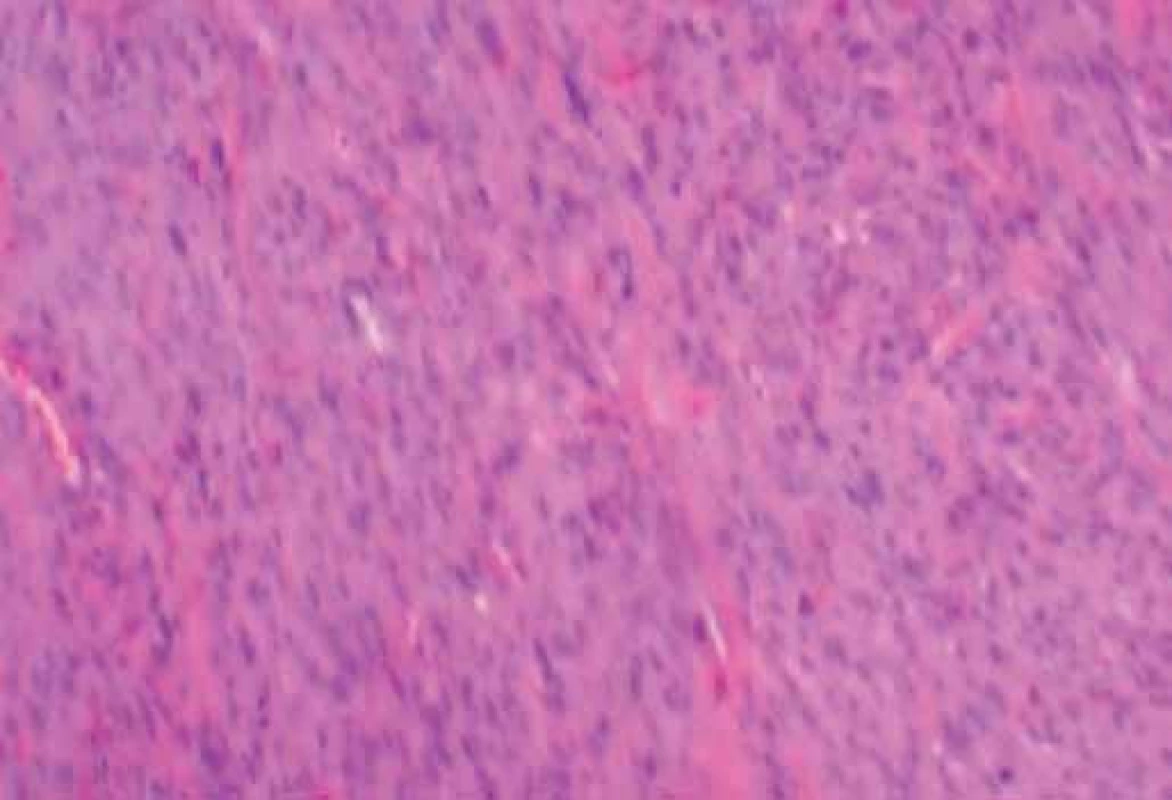
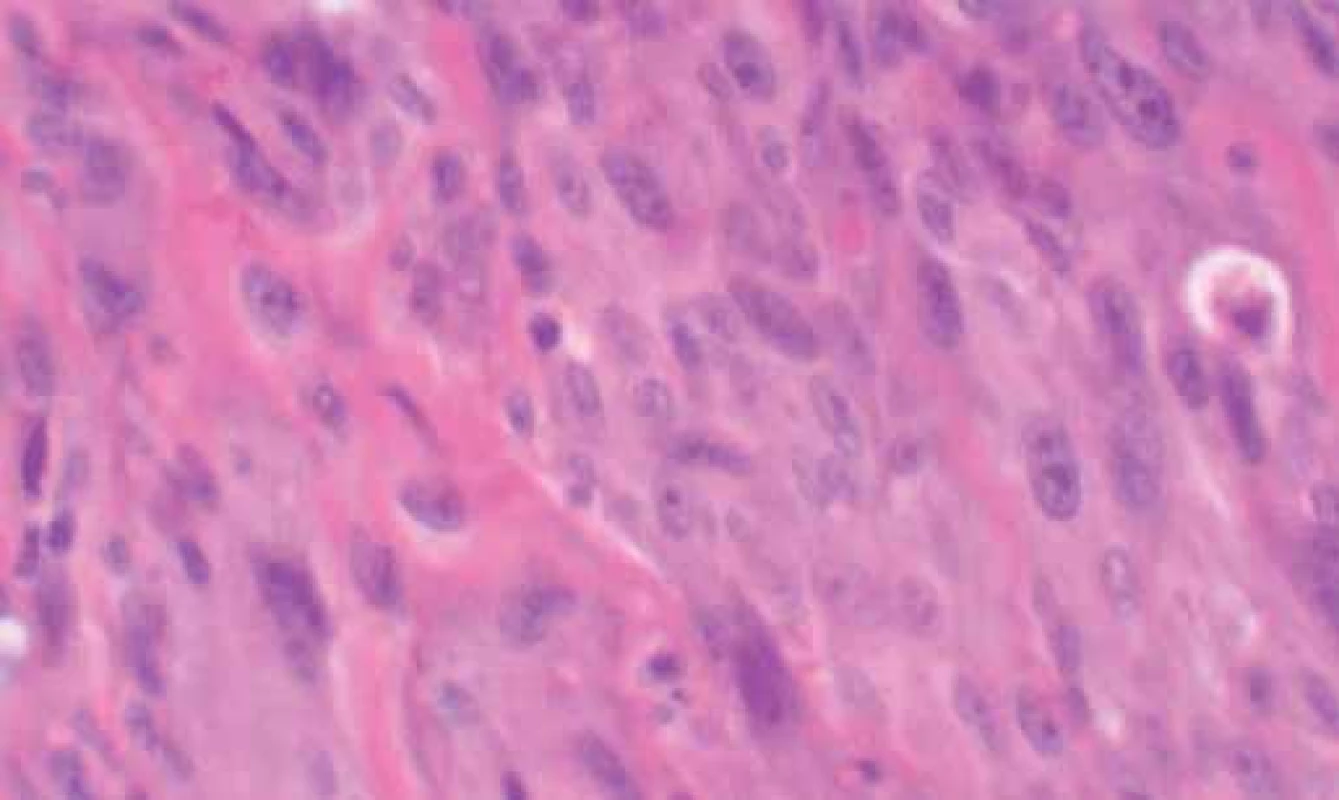
Conclusion
Atypical fibroxanthoma normally appears as a swiftly growing nodular or nodulo ulcerative lesion. It may be composed predominantly of either pleomorphic, spindle, epithelioid cells, or a mixture of these cells. The differential diagnosis includes pleomorphic dermal sarcoma, squamous cell carcinoma, malignant melanoma and leiomyosarcoma [5].
It occurs mostly in older adults and in sun exposed areas [6], with male predominance [7] and is a diagnosis of exclusion. The treatment is surgical and the preferred method is the aforementioned Mohs surgery [8]. Even though fibroxanthoma may be locally aggressive [9], the prognosis is usually very good if margins are adequate and these tumors rarely metastasise [7,10].
The authors declare they have no potential conflicts of interest concerning drugs, products, or services used in the study.
The Editorial Board declares that the manuscript met the ICMJE “uniform requirements” for biomedical papers.
Rodrigo Kraft Rovere, MD
Oncology Unit
Santo Antonio Hospital
Rua Itajai 545
Blumenau, Santa Catarina
CEP 89050100 Brazil
e-mail: rodrigorovere@hotmail.com
Submitted: 31. 3. 2014
Accepted: 1. 4. 2014
Sources
1. Naser N. Cutaneous melanoma: a 30‑year‑ long epidemiological study conducted in a city in southern Brazil, from 1980– 2009. An Bras Dermatol 2011; 86(5): 932– 941.
2. Bedir R, Agirbas S, Sehitoglu I et al. Clear cell atypical fibroxantoma: a rare variant of atypical fibroxanthoma and review of the literature. J Clin Diagn Res 2014; 8(6): FD09– FD11. doi: 10.7860/ JCDR/ 2014/ 8798.4466.
3. Patterson JW, Konerding H, Kramer WM. „Clear cell“ atypical fibroxanthoma. J Dermatol Surg Oncol 1987; 13(10): 1109– 1114.
4. Anderson HL, Joseph AK. A pilot feasibility study of a rare skin tumor database. Dermatol Surg 2007; 33(6): 693– 696.
5. Hussein MR. Atypical fibroxanthoma: new insights. Expert Rev Anticancer Ther 2014; 14(9): 1075– 1088.
6. Hammerschmidt M, Azevedo LM, Ruaro A et al. Case for diagnosis. Atypical fibroxanthoma. An Bras Dermatol 2012; 87(4): 647– 648.
7. Wollina U, Schonlebe J, Ziemer M et al. Atypical fibroxanthoma: a series of 56 tumors and an unexplained uneven distribution of cases in southeast Germany. Head Neck. In press 2014. doi: 10.1002/ hed.23673.
8. McCoppin HH, Christiansen D, Stasko T et al. Clinical spectrum of atypical fibroxanthoma and undifferentiated pleomorphic sarcoma in solid organ transplant recipients: a collective experience. Dermatol Surg 2012; 38(2): 230– 239. doi: 10.1111/ j.1524‑ 4725.2011.02180.x
9. Inskip M, Magee J, Weedon D et al. Atypical fibroxanthoma of the cheek‑ case report with dermatoscopy and dermatopathology. Dermatol Pract Concept 2014; 4(2): 77– 80. doi: 10.5826/ dpc.0402a16.
10. Cooper JZ, Newman SR, Scott GA et al. Metastasizing atypical fibroxanthoma (cutaneous malignant histiocytoma): report of five cases. Dermatol Surg 2005; 31(2): 221– 225.
Labels
Paediatric clinical oncology Surgery Clinical oncologyArticle was published in
Clinical Oncology
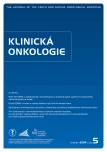
2014 Issue 5
Most read in this issue
- Prognostic Markers of Advanced Non-small Cell Lung Carcinoma – Assessing the Significance of Oncomarkers Using Data-mining Techiques RPA
- Breast Cancer Patient Satisfaction with Immediate Two-stage Implant-based Breast Reconstruction
- Cereblon – a New Target of Therapy in the Treatment of Multiple Myeloma
- Function of CDK12 in Tumor Initiation and Progression and Its Clinical Consequences
